|
Blackstone River Watershed Association
|
|
|
BRWA NEWS
|
Fall Hike
This coming Sunday is your chance to explore
another part of the diverse Blackstone River watershed. The BRWA will be
offering a 2-mile guided hike through the Stefans Farm property in Upton
from 1-3pm.
This property had been farmed for generations and now has been set aside
as open space by the town of Upton. It offers fields, woods, and wetlands
as habitat and as recreational opportunities for hikers, horse riders,
birders, and more. Learn about the flora and fauna living here, some of
which is state-listed and some of which poses a considerable invasive
challenge. Experience the agricultural legacy of the land along with
current management practices - both underway and proposed, for grassland
and woodland portions of the site.
Meet at the parking area on Mechanic Street 1 mile north of Rt 122. The
parking area is immediately after the powerlines. Suitable for all ages,
although the ground is uneven. Bring water, and dress for the weather.
Please RSVP to
events@thebrwa.org to help with our planning. Free for BRWA members.
For nonmembers there is a suggested donation of $5/person or $15/family
to offset program costs. Want to join the BRWA? You can do so at the
hike or online at www.thebrwa.org.
top
|
Annual Meeting/Member Appreciation Event
"Exceptional and Fascinating."
"Left me with a
desire to learn more about the Living Systems Lab".
"Thoroughly impressed."
"I learn something new each time I tour the site."
This is what people had to say after attending the BRWA's annual meeting on
Sunday, November 8th, where Gene Bernat, CEO of the Fisherville Redevelopment
Company, gave a presentation and tour of the Living Systems Lab (LSD) in South Grafton.
Gene explained that one of the LSL's overreaching goals is to build
community through participation in ecological remediation and restoration
- in this case, the Blackstone Canal at Fisherville, which is highly
contaminated by leaking underground tanks of oil, among other
pollutants. It took over 200 years of industrial innovation, with best
intentions for building communities but some unfortunate consequences for the
environment, to arrive at the situation that the Blackstone canal and river
are in. So it will take a complex, long-term approach of science, public
policy, and community buy-in to restore this landscape to a healthy state.
More than anything, this approach will require a new cultural mindset of how
we view the river as a resource. It will require hard science as well as
social science. For example, before we shake our heads at the lack of
foresight of mill owners, consider that these same water resources are now
being contaminated with antibiotics and by personal care products containing
plastic microbeads. We have to ask ourselves if we are any different than
the mill owners, utilizing the river as a vehicle of waste disposal.
Gene emphasized that whether we view the water impairment from a historic or
current perspective, we can't choose to walk away from this ongoing legacy of
degradation. We have to deal with it in an incremental manner, in a
meaningful way. It's not something for someone else to take care of.
Furthermore, it's not enough to simply clean up sites like this. It's
equally imperative that we view it as an opportunity to create a park
amenity, a teaching tool, a recreational resource. Our goal should be to
create a landscape that inspires.
Read more about the cutting-edge technology used at the LSL in our
Spotlight on Science section.
top
|
Honoring a Blackstone Advocate
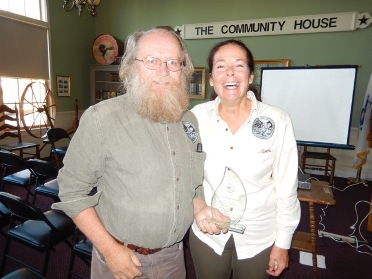
|
The BRWA, as part of its Annual Meeting, took time
to acknowledge the lengthy and invaluable service that Val Stegemoen has
provided the organization. Val recently retired from the Massachusetts
Department of Conservation and Recreation after 20 years as Park Manager
for Blackstone Canal and River State Park @ River Bend Farm in Uxbridge.
JoAnne Holahan, current BRWA President,
presented Val with a beautiful water drop shaped award engraved with the
following inscription:
To Val Stegemoen,
With deepest appreciation for your tireless work and dedication in
promoting the mission of the Blackstone River Watershed Association.
Dona Neely, past President of the BRWA, had this to say: "During my time
on the Board I was always aware of and impressed with Val's dedication to
the BRWA's mission. He always had suggestions for activities, was always
available to assist, and regularly shared knowledge that helped us make
more informed decisions. His awareness of the area and its history were
invaluable and his contributions played a significant role in the success
of the BRWA's initiatives. ...I am grateful for all he has done for the
watershed and I wish him all the best as he begins his new journey."
Maggie Plasse, a long-time Board member commented, "Val has always
supported and encouraged the BRWA. He supported cleanups by suggesting
sites, encouraged us to hold events at RBF, brought canoes to the canal
for member paddles, and encouraged us to set up an outreach table at park
events. One year for the BRWA annual meeting, Val led a spooky hike along
the canal and shared ghost stories about the valley
(it was around Halloween). While he was leading the hike, he got a phone
call from the police, there was an escaped convict in the area. It seemed
like he was just adding a bit of drama to the hike but in fact it was true.
Val tirelessly attended BRWA meetings. He had a quiet and calm way about
him, but it was very effective."
Mary Murray, BRWA Board member, has this to say about Val: "I have known
him approximately three years. I have watched him at the visitor center
chatting with many people, walkers, joggers, canoe and kayakers. He is
always friendly, helpful, and always an abundance of knowledge. I have
worked quite a few functions at the River Bend Farm, and Val was always
there to help us get supplies to set up. He is a true professional, and a
genuinely gracious person. I spend quite a bit of time at River Bend, and
I always enjoyed chatting with him. I have learned many historical facts
regarding the Blackstone from Val, and will truly miss him."
From all of us, including the Blackstone River for which you have worked
so tirelessly, THANK YOU!
top
|
|
CALENDAR OF EVENTS
|
November is Native American Heritage Month.
The Nipmuc Nation is one of the largest tribes in New England. Historically,
they resided throughout the Blackstone River watershed, moving seasonally
based on natural resources. Learn more at
http://www.native-languages.org/nipmuc_culture.htm.
|
|
11/15
|
BRWA Fall Hike.
1-3 p.m. Stefans Farm, Upton.
Signup:
events@thebrwa.org.
See above for more information.
|
|
11/17
|
Climate Change, Energy, and the Outdoors Speaker Series.
Mass Audubon. 7:00- 8:00 p.m. Presentation by Mass
Energy and Mass Audubon on reducing your electricity usage/carbon footprint
through energy efficiency, the purchase of local green electricity, and
solar installation. AMC. 4 Joy Street, Boston.
|
|
11/18
|
Blackstone River Watershed Council Monthly Meeting.
6:30pm - 8:30pm. Lincoln RI.
info
|
|
11/22, 29
|
Brown Bag Along the Blackstone.
11:30-12:30. Blackstone River and Canal State Park,
Uxbridge. Pack a lunch and join us at River Bend Farm Visitor Center to watch
an episode or two of “Along the Blackstone”; an award winning series of
videos by the Rangers of the National Park Service capturing the stories,
cultures, natural resources, and the heritage of the Blackstone Valley. Bring
your own lunch. Program will be followed by a Canal Walk at 1:00. Info: 508-278-7604.
|
|
11/22, 29
|
Geology Hike to Lookout Rock.
10:00-11:30 a.m. Blackstone River and Canal State
Park, Uxbridge. Take a hike along King Philips Trail to discover stories
in stone. See how glaciers carved the landscape, find a stone cutter's
boulder, and identify minerals along the way to a rewarding view. About 3
miles round trip, moderate hike. Bring water and snack for a short break at
the lookout. Meet at 366 East Hartford Ave, Uxbridge, Rice City Pond parking
area. Info: 508-278-7604.
|
|
1/28
|
BRWA Board Meeting.
6:45 p.m. to 8:00 p.m. 287 Oak St., Uxbridge.
info
|
top
|
THINK GLOBAL, ACT LOCAL
|
Massachusetts Scores High
Each year, the American Council for an Energy-Efficient
Economy (ACEEE) releases an
Energy Efficiency Scorecard by state. This
year, Massachusetts received the top score for the 5th year running! This has
been achieved, in part, through the state's Green Communities Act, which
mandates that Massachusetts achieve energy efficiency in building,
transportation, energy production, and other sectors. The Act also directs
the state to promote renewable energy.
top
|
Debate Continues on Regional Pipeline
The Federal Energy Regulatory Commission (FERC) is
considering comments on the proposed
Northeast Energy Direct gas pipeline project. The State of Massachusetts
and organizations including Mass Audubon have requested that a thorough
analysis of needs and alternatives be pursued before furthur plans are made to
develop the pipeline.
According to Mass Audubon, the proposed pipeline project is "incompatible
with national, regional, and state policies and goals for (green house gas)
reductions, and comes with enormous, avoidable environmental and economic
consequences." (
7/22/15 letter from Mass Audubon to FERC). Massachusetts Attorney General
Maura Healey specifically asked FERC to utilize a combined Environmental Impact
Statement to review the NED project in conjunction with other pending
pipelines in New England rather than review them as separate impacts.
Mass Audubon Review of the Natural Gas Pipeline
top
|
|
SPOTLIGHT ON SCIENCE
|
Living Systems Lab
As part of the BRWA's annual meeting, Gene Bernat,
CEO of the Fisherville Redevelopment Company, gave a tour of the biological
remediation complex in South Grafton where the Blackstone Canal joins the
Blackstone River. The Fisherville Mill site has a long, toxic legacy of soil
contamination that includes two leaking underground tanks of heating oil #6—
a product that does not respond to standard biological remediation utilizing
oxidation. In addition, 55-gal drums of cleaning solvents from various
businesses had been dumped in dry wells on site. Denser than water, these
solvents had sunk low and affected the local aquifer.
In 1999, a massive fire destroyed the Fisherville Mill. During the fire
fighting effort, ten million gallons of water were pumped out of the ground,
creating a toxic plume of trichloroethylene (TCE) in the local drinking water
supply. While this particular contaminant has been largely remediated, the
heating oil and other toxins remain in the soil and surrounding water.
EcoMachine flowchart.
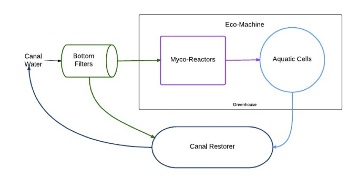
|
Gene began the tour at the canal, where the first and last stages of a
four-part bioremediation process take place. In the first stage, microbial
bottom filters treat the canal water as it is drawn into the greenhouse. The
second and third stages of treatment occur within the plant racks and water
tanks of the greenhouse, as will be explained below.
After it has been processed in the greenhouse, the water is sent to the Canal
Restorer, engineered islands of marsh hibiscus and other aquatic plants that
perform the final stage of bio-filtration. Gene commented that, when in
bloom, the hibiscus is stunning, helping to make the site a destination
separate from the bio-remediation processes that are underway and unseen. He
also pointed out the beautiful and historic stone arch bridge under which the
canal passes. The arch's sensitivity to vibrations limits the heavy machinery
that could otherwise be used on site for remediation.
Leading us into the greenhouse, Gene explained how canal water is shunted
into the facility. Racks on one side of the building hold trays of wood
pellets that have been inoculated with four cultures of mushrooms: turkey
tail, oyster, scaly tooth, and wide caps. They perform both mechanical and
biological filtering by breaking down the heating oil. Mushrooms grow by
changing their environment, and absorbing sugars through their cell walls.
They do this with the same digestive juices that people use to break down
food; the difference is that mushrooms do it externally. The mushrooms do not
distinguish between the wood pellets and the oil on the wood, so as their
enzymes go to work, both food sources are digested.
One of the most fascinating lessons learned in the Fisherville project is the
specificity mushrooms have to the various compounds of the heating oil. Just
as different species of mushrooms vary in their preference of tree host, each
of the four fungi work on different molecules in the petroleum. As Gene
explained it, enzymes are a lock and key system with the food as a lock and
enzymes as the key. Each key fits a particular lock. It is only through the
combination of multiple mushroom species that all the elements of the heating
oil can be broken down.
These complex ecological relationships demonstrate the vital importance of
conserving biodiversity. There is an immense amount that we still do not know
about the role each organism plays in natural ecosystems. Therefore conserving
each species, to the extent possible, is critical for future ecosystem
function and integrity.
Once the canal water has moved through the racks of mushrooms, it enters a
series of six water tanks or "aquatic cells" inside the greenhouse. Each tank
contains a floating mat of native aquatic plants with roots descending into
the water. Gene tilted one of the plant mats to show the trailing roots. It
is here, below the surface, where the real work takes place.
As the water moves through the sequence of aquatic cells, more and more of
the contaminants are drawn up by the roots to support plant growth above the
surface. It was clearly visible how root length gradually increases as you
move from the first to final tank. This reflects the gradual decrease in
contaminants (food) for the plants. In Tank 1, the water contains the highest
level of compounds and the plants do not have to work hard to secure the
nutrients. By the sixth and final tank, most of the compounds have been
filtered out of the water, so the plant roots grow longer as they work harder
to secure the necessary food to survive and grow.
The tour ended with Gene reiterating his goal to see the Living Systems Lab
serve not just as a site cleanup, but also as an opportunity to build
community by engaging every one of us in the ecological restoration process.
We must put an end to treating the river and other waterways as open sewers
(e.g., antibiotics, microbeads). We should all strive to view these as a
resource to embrace and maximize, not a liability to put a band-aid on and
walk away from. It is Gene's vision that the Fisherville Living Systems Lab
serve as a model that can be replicated up and down the Blackstone River and
throughout the watershed to meet the individual needs of each community.
That should be the legacy we leave behind.
top
|
|
FAMILY FOCUS
|
Bark Up Close
We've watched with joy as leaves turn color, float
downward, and crumple under our feet. It's sad to see them gone, but wait!
There is still plenty about a tree that you can explore starting with the
bark. (Don’t worry, they won't bite!)
- Did you know that 62% of Massachusetts is covered in forests?
- Can you believe that our state has at least 72 species of trees?
- Would you have guessed white pine, hemlock, red maple, and northern
red oak, if you were asked which trees were the most common?
Each kind of tree has bark that looks and feels differently. Rub your hands
over them and discover that for yourself! You can turn this difference into
art by grabbing some paper and crayons and creating your very own gallery of
tree rubbings!
You'll want to peel away the wrapping of the crayon so you can use the long
side to gently rub along the bark. You can write the name of the tree on
the front of the paper and frame it. Or you can write the name on the
backside of the sheet and test family members and friends to see if they can
tell which tree is which.
Can you match these names and pictures of common trees?
- Eastern Hemlock
- White Pine
- Red Maple
- Red Oak
- Yellow Birch
- Shag Bark Hickory
|
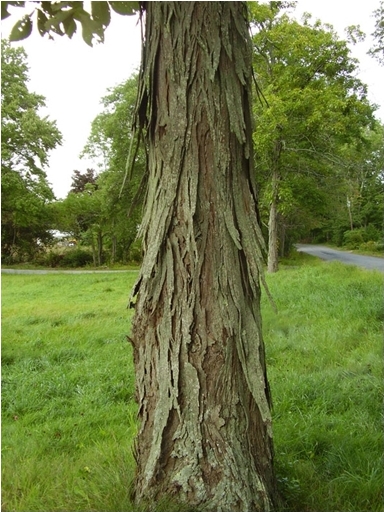
|
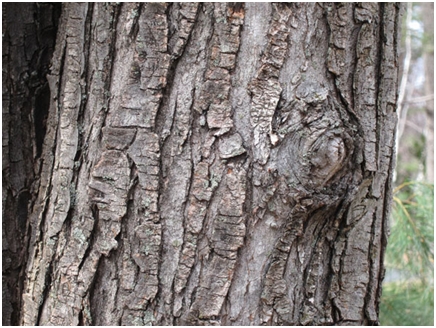
|
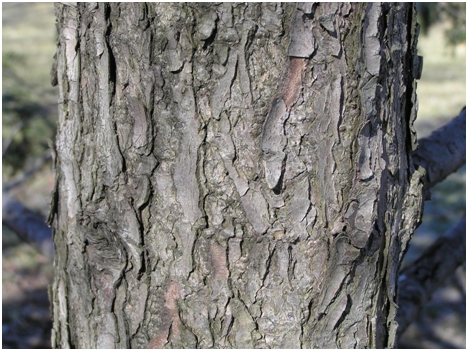
|
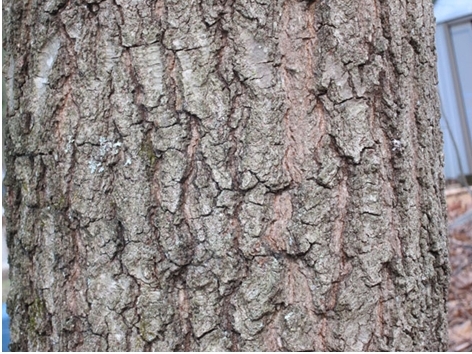
|
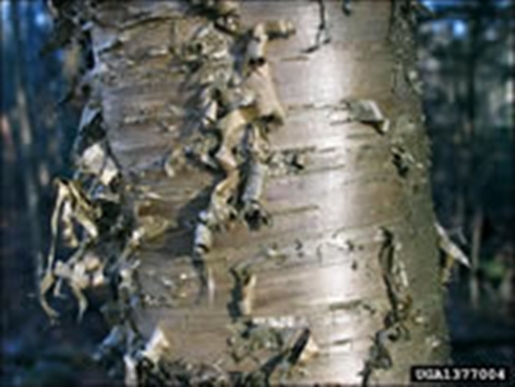
|
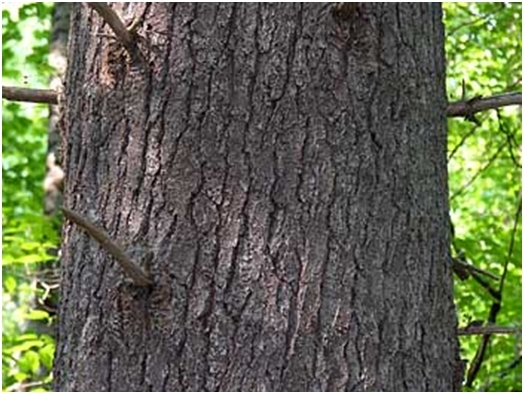
|
top
|
|
REFLECTIONS
|
“It is not half so important to know as to feel.” Rachel Carson
How often do we remember to focus on just the lighting in nature?
Forget the downpour of color we are experiencing right now with autumn foliage in
New England.
Put away the binoculars and field guides.
Set aside
aspirations to log a certain distance on land or water.
Just reflect on, and
absorb, the pureness of light for it's own value.
Our next full moon is
Wednesday, November 25 around 5:44 p.m. Go sit by a pond, stream, or river
and experience the interaction of moonlight and water.
Namaste.
Moonrise over the Yellowstone River by Ben Steinberger
© Ben Steinberger Photography 2015,
www.bensteinberger.com.
.jpg)
|
top
|
Views & opinions expressed in linked websites do not necessarily
state or reflect those of the BRWA.
|
|
Your input is crucial to this eNewsletter. If you have a local
watershed-related story, information of interest to our subscribers, or
comments about this publication, drop an email to the editor.
The Blackstone River Watershed Association (BRWA) has a mission to
engage, educate, and advocate for improved water quality in the Blackstone
River Watershed; its objectives are to:
- Engage the public in watershed stewardship activities,
- Educate members, supporters, and residents on watershed protection strategies, and
- Advocate to local residents, community leaders, non-profit partners, and
state regulators to take actions that will help to ensure our waterways continue
to provide healthy habitat and enjoyable recreational opportunities.
The BRWA eNewsletter is published monthly by the Blackstone River Watershed
Association. BRWA is a 501(c)(3) non-profit organization.
Editor: Susan Thomas susan.thomas@thebrwa.org
Mailing address: BRWA, 271 Oak Street Uxbridge, MA 01569
Phone: 508-278-5200 Web: www.thebrwa.org
Click here for back issues.
|
|

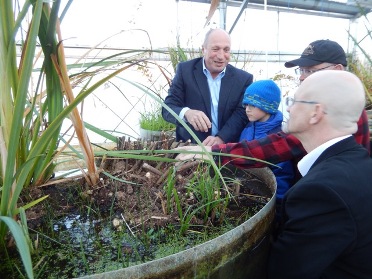
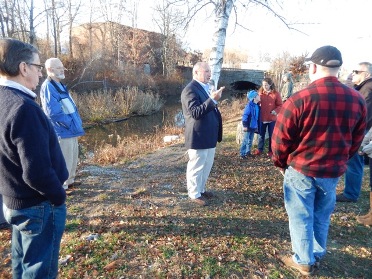








.jpg)